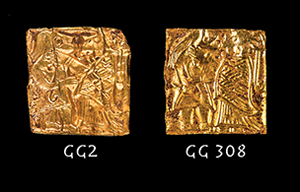Published online by Cambridge University Press: 01 December 2023

During the mid-first millennium AD, centres of royal power with large halls emerged across southern Scandinavia. No evidence for such sites, however, was known from Östergötland in south-east Sweden. Here, the authors present results from fieldwork at Aska near Vadstena, identifying the principal manor of a petty royal lineage occupied between c. AD 650 and 1000. Excavations have revealed a 50m-long hall raised on a 3.5m-high platform and the largest known assemblage of small gold-foil figures from the first-millennium kingdom of Östergötland. Aska represents a ‘second-generation ruler’ site, similar in form and date to Old Uppsala, Borre, Old Lejre and Tissø, revealing Östergötland as an integral part of the political geography of early medieval Scandinavia.